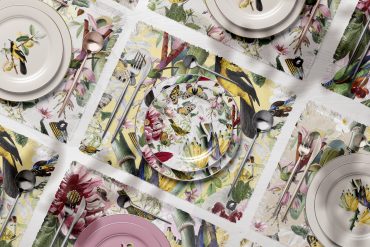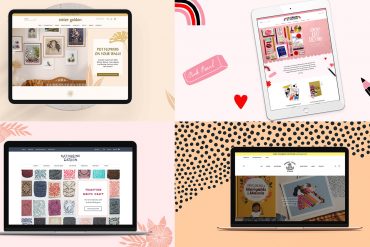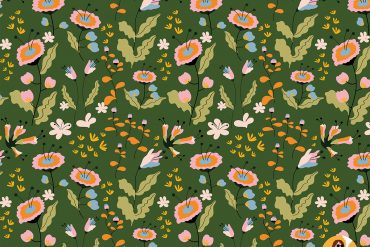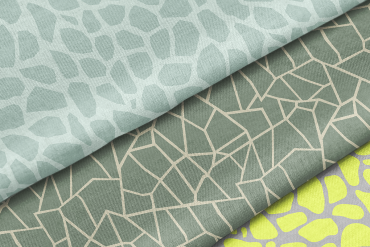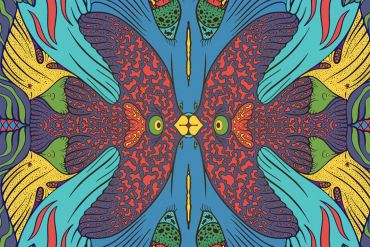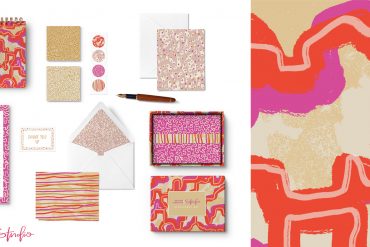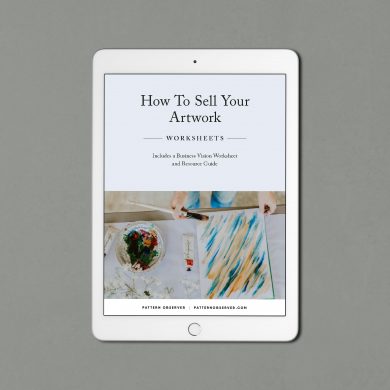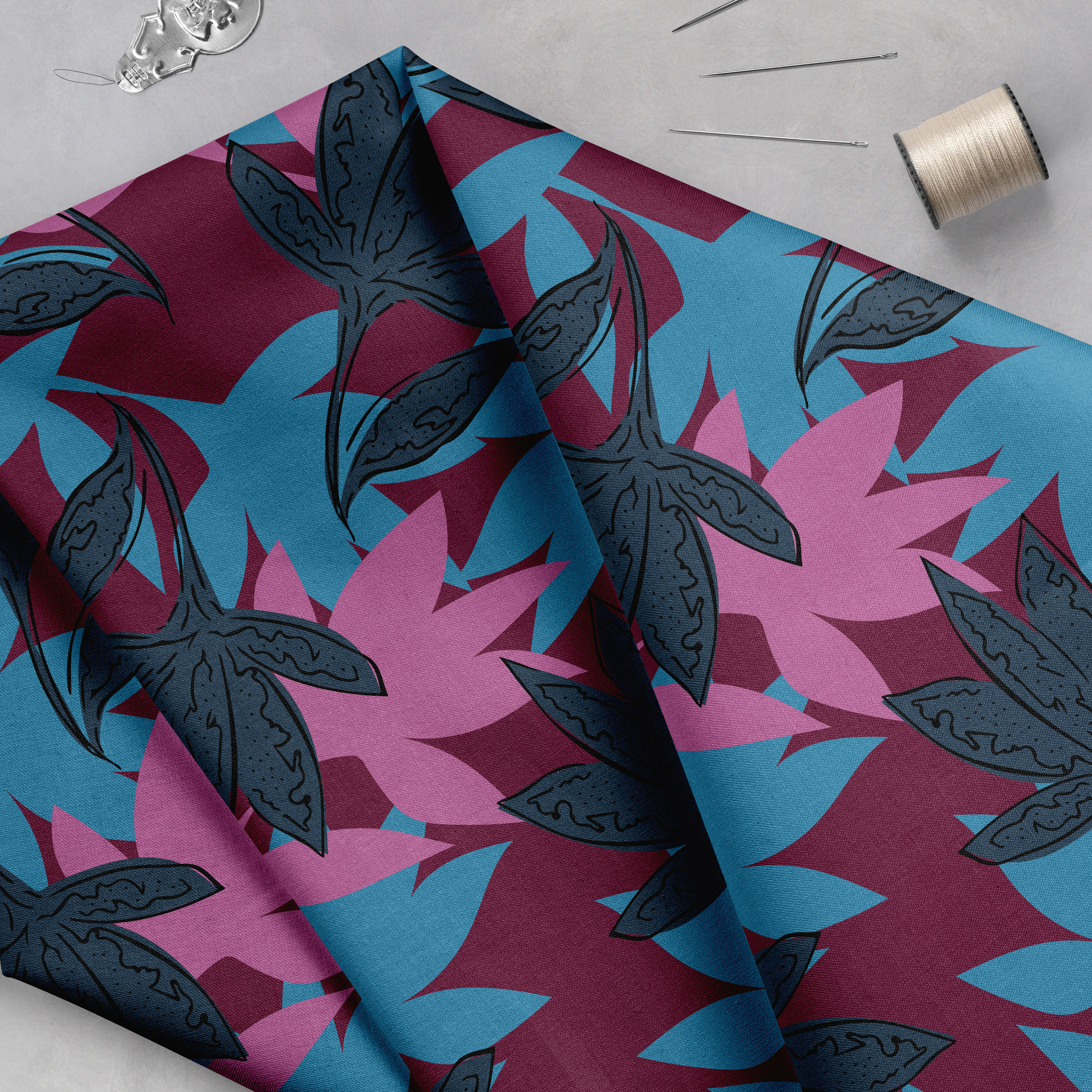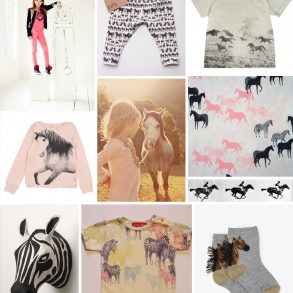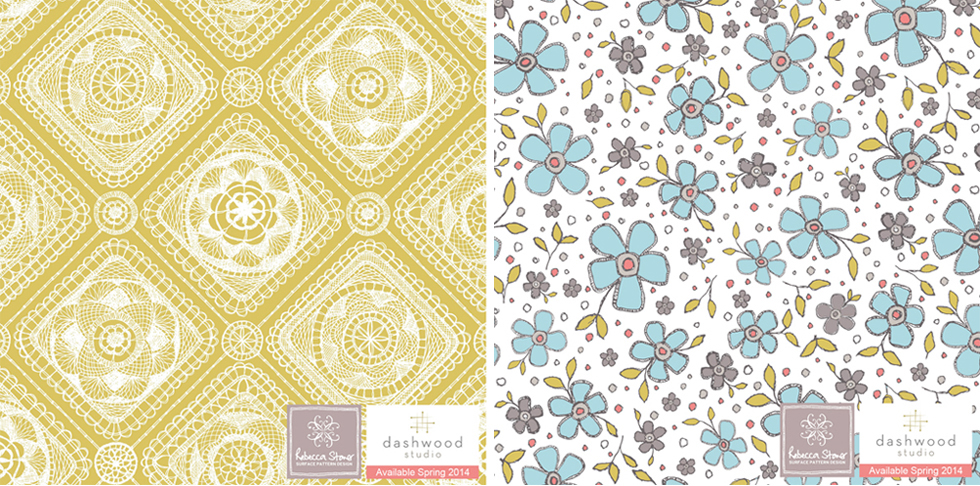
Tell us a bit about your design background. How did you develop your interest in surface design?
I originally worked in admin and accounts roles after leaving school but being creative and always feeling the need to express my creativity, I knew deep down this kind of work just wasn’t for me. So I made the huge decision to leave my job and take some time out to go travelling, where I realised I had to pursue some kind of career that would fulfil my creative needs. On my return I enrolled on an Art and Design degree at York St John University.
During my first year on the course we worked on a module about pattern and texture and this is where I discovered the world of Surface Pattern Design. I couldn’t believe that you could have a career creating patterns every day and immediately I was hooked! I then went on to specialise in Surface Pattern Design for last 2 years of the course and loved every minute of it, so much so that I gained a First Class Honours Degree at the end of it!
I worked a lot in wet print and fell in love with the screen printing process but I also learnt how to develop my designs and artwork further in CAD which has been invaluable since leaving University. I then went straight on to complete an MSc in CAD for Textile Designers at Huddersfield University where I learnt a lot about the industry itself, how trends play such an important part in the pattern design industry and also how to use different dedicated design software packages.
I set up my business in 2005 straight after graduating. Initially I manufactured products such as cushions & greetings cards with my patterns on and exhibited at Trade Shows but a couple of years later I began to just focus on the pattern development side of my work and concentrated more on freelance projects. 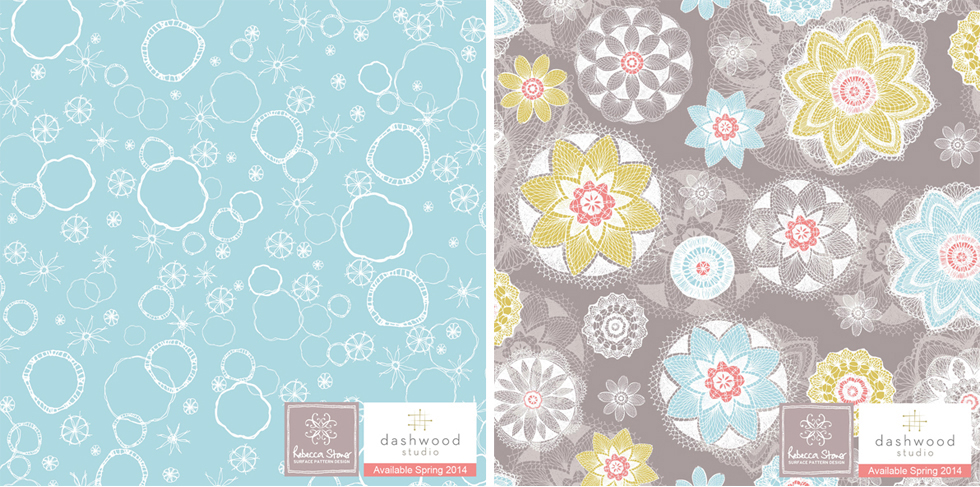
I discovered Dashwood Studio after seeing Phyllidia Coroneo’s beautiful Enchanted Forest collection, which was actually their first collection and I just loved the whole look and feel of the company and felt my work could be a good match for them. I also loved that it was a UK company too, as until now, I don’t think there have been any other companies that produce licensed fabric collections and feature and support UK designers like Dashwood Studio have.
I decided to be brave and submitted some work to them. They were really friendly and got back to me quite quickly and although they liked my work they said they were full at the time but to keep in touch, which is what I did.
So later that year I created the Prairie collection and hoped that they would love it as much as I did. I submitted some images of the collection and immediately they got back to me and said how much they loved it and wanted to license it! I was so pleased and excited.
I feel this is a real lesson in not giving up at the first hurdle. I’ve really learnt that rejections are just part of this industry and you have to try and keep positive and use any knock backs to make you stronger. Sometimes it’s more about timings for a company and not just whether they like your work or not.
How much (if any) creative direction were you given from Dashwood Studio? Did you work with them to develop the collection or did you present a completed collection to them?
I submitted a full collection to Dashwood Studio and I was fortunate in that they liked it and wanted to use it almost as it was. We did make a few changes where we dropped a design and re-coloured a couple of them to make the collection even stronger but essentially the collection wasn’t altered that much. It was great to get such valuable feedback from them and advice on how to make the most out of a quilting collection. They are a great company to work with.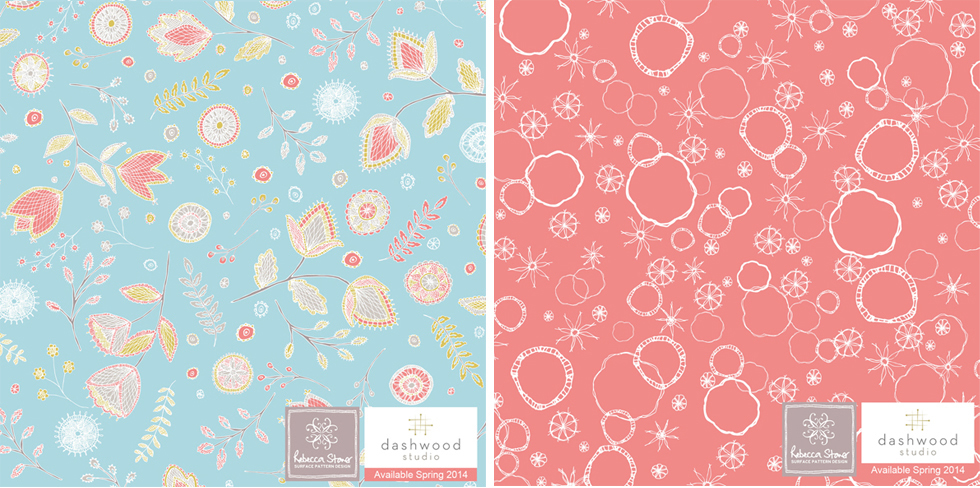
I had been drawn to the patterns in lace, crochet and doilies for a while and really wanted to create some designs inspired by that theme. I began by building a secret board on Pinterest where I collected inspirational imagery of lace and crochet work, which would help inspire the collection but that I could then make public once the collection was finished to help show the story behind the collection. (Check out the board here.)
I was completely inspired by the whole idea of looking at traditional textile techniques such as crochet work and lace and developing a collection of contemporary designs that could be printed onto fabric and then used again in traditional techniques such as quilting and dressmaking.
All the designs are hand drawn and I felt it was important to try and keep that style and technique across the whole collection. Once the designs began to develop, I really felt I wanted the collection to have a delicate, pretty, bohemian feel to it and that’s where the colour palette and name Prairie came from.
In addition I created the Prairie Look Book to help communicate the story and inspiration behind the collection.
What was the hardest part of bringing this collection from sketch to finished product? What was the most fun or exciting part?
If I’m completely honest none of this particular project has felt hard as I’ve enjoyed it so much! Something just clicked when I began designing the collection and I ran with it. I’ve loved every minute of it! If I had to say one thing, it would be getting the colours right for the finished fabric. So matching what I see on my screen to what is actually printed on the fabric. The fabric is being wet printed so the colours are mixed and the trickiest colours to match were the greys.
There have been lots of exciting moments so far, for example, the moment Dashwood said they wanted to license the collection was a huge moment for me, seeing the first set of strike-offs with my patterns on the fabric and my name down the selvedge and hearing all the amazing feedback from shops wanting to stock the fabric! I know seeing the actual printed fabric in shops will be a very special moment too which I just can’t wait for!
What one action has made the biggest impact on your design business?
I’m not sure that there’s only been one particular thing but I do remember a defining moment last year when I decided to not be afraid of sharing and showing my designs anymore. I think within the design industry there’s a temptation to feel like you have to keep your work a secret, which to some extent is true, especially if you’re working on client’s projects but I’m also a big believer in getting your work out there. With that in mind I developed some collections just for me that I could promote on my website and social media.
During this time I also worked on developing my craft as a designer. Taking time out to create a full portfolio of designs and work on your style may feel indulgent when all you want is the work to come in but I think it’s a really valuable investment that you can make in your business. It really helped me to become focussed on what I wanted to do and where I wanted my business to go.
The feedback I have received from companies is that they want to be able to see a Designer is comfortable and confident in their work and their style and for this to be apparent when they look through their portfolio.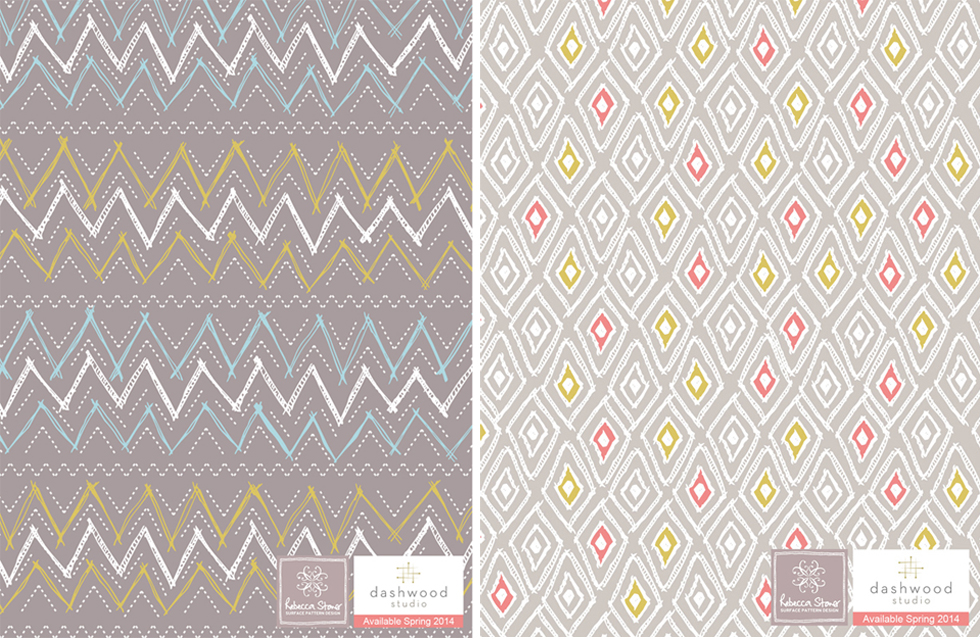
I think to work hard goes without saying but to work hard with a definite focus on what it is you want to achieve can really help and make a huge difference. I found that setting myself goals to work to really helped me. I began by writing down my big main goals and then breaking those down into smaller, more achievable goals that I could work towards on a daily basis. It made it feel much less daunting and I gained a sense of achievement each time I completed one. Never lose sight of your goals, no matter how hard it becomes and how many rejections you might face.
Passion and determination are other huge factors. I think you really need to have a passion for what you do because that is what is going to push you though all the tough times and rejections. It may sound like I’m painting a negative picture of the Surface Pattern Design Industry and you might just be lucky but it really is competitive out there with lots of new designers launching every day, so developing a tough skin is so important!
Try not to take rejections personally, which I know is such a hard thing to do and counter intuitive to us as Designers but just because your work isn’t the right fit for one company, it doesn’t mean it won’t be for another one. If you really believe in what you do then keep pushing it and keep knocking on those doors!
Having peers or a community of like-minded Designers around you, whether it’s forums from online courses or friends you have that do similar work can be a great support. I’m part of an online group of Surface Pattern Designers who I ‘talk’ to most days. I’d certainly be lost without it!
And lastly, enjoy yourself! I really believe this shows in your work. The designs and collections I’ve enjoyed creating the most (like Prairie) have so far been the most successful. I really think this comes across not only in the actual designs but in the way you talk about your work and people will pick up on that.
Rebecca is always excited to hear about any new commission opportunities, freelance work and licensing partnerships that might be available. Get in touch via her website, or check out her blog, Facebook page or Twitter.
***Learn the keys to designing a successful print collection like Rebecca’s in The Sellable Sketch, part of our Textile Design Lab e-learning site. Membership is just $49/month!***




